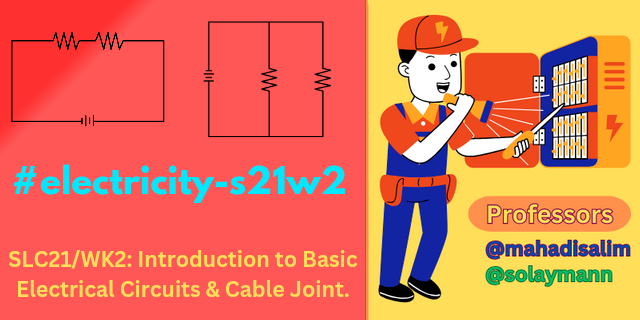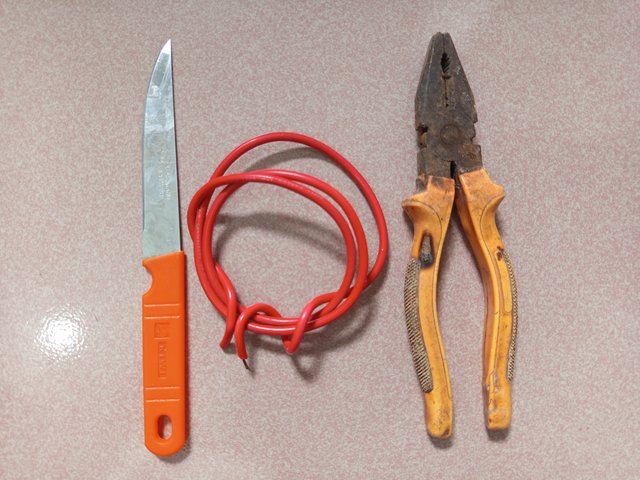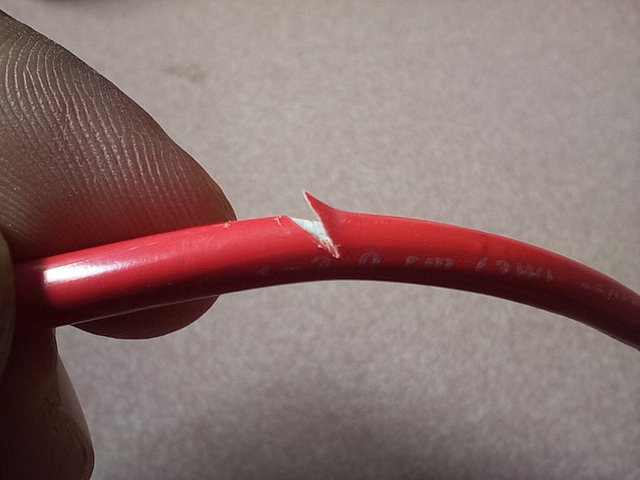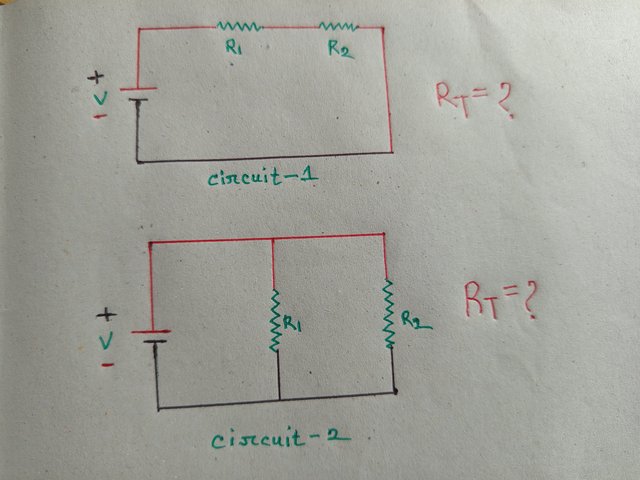SLC21/WK2: Introduction to Basic Electrical Circuits & Cable Joint.
Greetings dear friends. We are about to begin week two of the Basic Electricity Learning Challenge. In the second week of the learning challenge, Basic Electricity will gain an understanding of electrical cable joints and series-parallel circuits from the teaching team. You are cordially invited to enjoy our course this week. Let's get started.

| Basic Electrical Circuits. |
|---|
We will know what the circuit is called? And how many types of circuits? Electrical circuits are mainly of two types. Series and parallel circuits. A series circuit is a single path for electricity to flow. A parallel circuit is more than one path for electricity to flow. We will introduce series and parallel circuits to students this week. We hope that anyone who pays attention to our course will learn something good. Which will give you enough idea of electrical work in practical life.
Series circuit: When an electrical load is connected to a voltage source in such a way that there is only one path for current to flow. That is, the same amount of current flows through each load in a series circuit. Below is a diagram of series circuit.
| Series circuit 👇 |
|---|

I have drawn the circuit and identified the circuit components. Here we have two resistances one R1 and the other R2. Note carefully each component mentioned in the circuit here there will be questions for you. Follow the following rule to calculate the resistance of a series circuit.
- The sum of each resistance connected in the circuit is the total resistance of the circuit. Below I have drawn a circuit and calculated its total resistance.
| Calculation of resistance of series circuit.👇 |
|---|

Parallel circuit : Multiple loads are connected to the voltage source in such a way that multiple paths of current flow are created in the circuit. Such a circuit is known as a parallel circuit. The current in each path of a parallel circuit will be different. However, if the parallel resistances are equal, the current will remain the same. Below I have drawn a simple parallel circuit.
| Parallel circuit👇 |
|---|

Pay attention to the circuit above there will be questions for students.
There are some rules for calculating resistance of parallel circuit which I mentioned below. First we will teach students very simple circuit solutions.
- 1st branch resistance x 2nd branch resistance / 1st branch resistance + 2nd branch resistance
Students will be able to find the resistance of a parallel circuit by following the given rules.
| Calculation of resistance of parallel circuit.👇 |
|---|

| Cable joint |
|---|
Connecting the ends of multiple conductors together is called a joint. If you have a loose cable on hand, we want to teach you how to joint it properly. Undoubtedly, students should gain an understanding of the joint of electrical conductors. So we want to give an idea about cable joint for students. We have five steps to connect. Below are the steps that should be followed to complete the cable joint.
Skinning: Removing the coating from the wire is called skinning. 1 to 2 inches of insulation should be removed from the tip of the cable before making the cable joint. It is best to use a knife to lift the insulation. For cable skinning, it is best to cut the cable at a 35 to 60 degree angle. Then the cable will not be damaged.
scraping: Stripping the insulation over the conductor. After skinning, the conductor should be scored with a knife. You can use the reverse side of the knife to avoid damaging the conductor.
Before making the cable joint, you can do the things mentioned in the moment. Below are some images of scanning and scraping. Also note the cable joint longitudinally.
step 1

As necessary materials, the amount of wire and a plus will be sufficient. Which is what you see in the image above.
step 2
 ❌ ❌ |  ✅ ✅ |
|---|
Using the knife upright while scanning insulation can damage the blade. So use the knife at an angle of at least 30 to 60 degrees. You can take cutting plus as safe as possible.
Step 3
 |  |
|---|
Cut the wire insulation with a knife at an angle. Cut the wire insulation from the four sides at the same angle as shown in the picture.
step 4

At least 1 to 2 inches of insulation should be removed from the ends of the two wires. You can remove the insulation as you wish to make the joint as I mentioned in the picture. But 1 to 2 inches will be enough.
step 5
 |  |
|---|
I cut the wire insulation free and bent it 90° from both sides along the middle of the two. I have positioned one against the other. Then I twisted the two extended parts in opposite directions.
step 6
 |  |
|---|
Students should observe the mentioned steps very carefully. Because there will be questions for students. I think it will give students a clear idea about cable joints.
A •
- What is called an electrical circuit? Mention the importance of circuits in electrical engineering.
B •

- Mention at least two differences between series circuit and parallel circuit.
- Note the above two circuits and mention their names, and calculate the total resistance of the two circuit. Assume any value of R1 and R2 but not the value specified in the course.
C •
- Take two pieces of wire and connect them properly. Be sure to mention consistent images and clear descriptions.
D •
- After completing this lesson write what you learn in your own words.
| Sl. No | Marks |
|---|---|
| A | 1.5 Marks |
| B | 4 Marks |
| C | 3 Marks |
| D | 1.5 Marks |
- Your title should be "SLC21/WK2: Introduction to Basic Electrical Circuits & Cable Joint."
- The content must be #steemexclusive.
- The article must contain the tag #electricity-s21w2.
- Plagiarism is not allowed.
- The link of your task must be added in the comments of this publication.
- Use the burnsteem25 tag only if you have set the 25% payout to @null.
- You can publish homework in any community and in any language. But don't forget to use the original tag.
- Invite three of your active Steemian friends.
- The participation schedule is 4 November to November 10, 2024, at 23:59 UTC.
SC01/SC02 would check on the entire 17 participating Teaching Teams and Challengers and upvote outstanding content. Upvotes are not guaranteed for all articles.
At the end of the week, we would nominate the top 4 users who had performed well in the contest and would be eligible for votes from SC01/SC02.
Best Regards,
Basic Electricity Teaching Team
@mahadisalim
@solaymann
My entry
https://steemit.com/hive-175406/@onomzy001/slc21-wk2-introduction-to-basic-electrical-circuits-and-cable-joint
x share link
https://x.com/solaymankabirr/status/1852944987631272221
Very nice topic kudus to the organizer and I can't wait to drop my entry
Dear @solayman,
This is my entry for lesson 02 : https://steemit.com/electricity-s21w2/@besticofinder/slc21-wk2-introduction-to-basic-electrical-circuits-and-cable-joint
Thank you
-Vimukthi
Will there be any value for the calculation of the RT or it should be calculated that way
Dear @solaymann my participation link
https://steemit.com/hive-180106/@hamidrizwan/slc21-wk2-introduction-to-basic-electrical-circuits-and-cable-joint
https://steemit.com/hive-141434/@manuelhooks/slc21-wk2-introduction-to-basic-electrical-circuits-and-cable-joint
My entry : https://steemit.com/electricity-s21w2/@max-pro/slc21-wk2-introduction-to-basic-electrical-circuits-and-cable-joint
Here's my entry below
https://steemit.com/electricity-s21w2/@bonaventure24/slc21-wk2-introduction-to-basic-electrical-circuits-and-cable-joint
A very interesting topic professor, i am already in love with this course thanks to the steemit team.